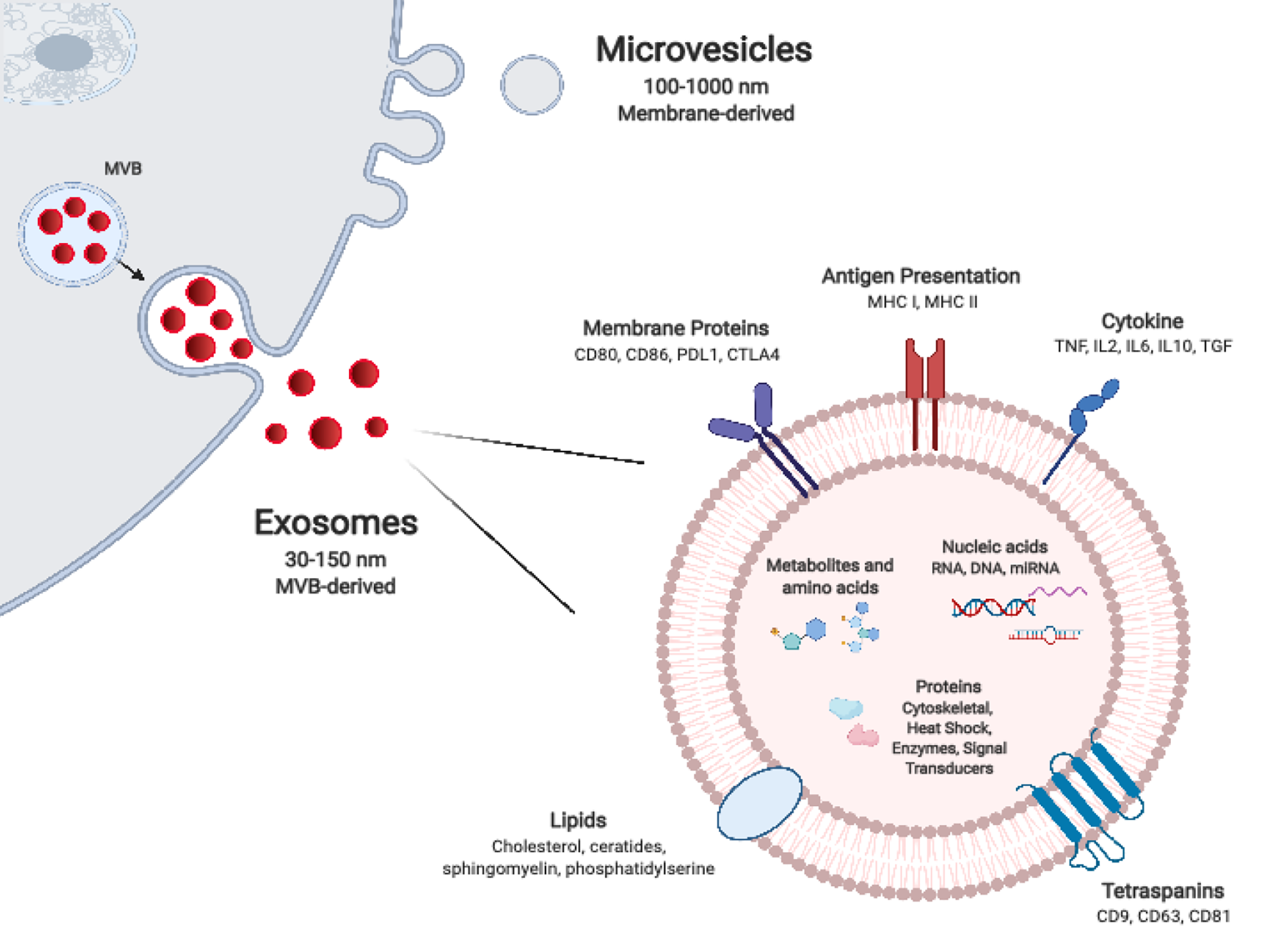Copyright
©The Author(s) 2020.
World J Transplant. Nov 28, 2020; 10(11): 330-344
Published online Nov 28, 2020. doi: 10.5500/wjt.v10.i11.330
Published online Nov 28, 2020. doi: 10.5500/wjt.v10.i11.330
Figure 1 Extracellular vesicle biogenesis and composition.
Exosomes are generated by inward budding of endosomal membrane which result in the formation of intra-luminal vesicles (ILVs) within multivesicular bodies (MVB). ILVs are released from MVBs as exosomes upon MVB fusion with the plasma membrane. Exosomes are smaller and more uniform in size in comparison to microvesicles, which form by directly pinching-off from the plasma membrane. The molecular composition of extracellular vesicles, which includes nucleic acids, proteins, and lipids, is dependent on their particular mode of biogenesis in addition to their parental cell of origin and its activation state. MHC: Major histocompatibility; PDL1: Programmed Death-Ligand 1; TGF: Transforming growth factor; CTLA4: Cytotoxic lymphocyte antigen 4; MVB: Multivesicular bodies; IL: Interleukin.
- Citation: Mastoridis S, Martinez-Llordella M, Sanchez-Fueyo A. Extracellular vesicles as mediators of alloimmunity and their therapeutic potential in liver transplantation. World J Transplant 2020; 10(11): 330-344
- URL: https://www.wjgnet.com/2220-3230/full/v10/i11/330.htm
- DOI: https://dx.doi.org/10.5500/wjt.v10.i11.330









